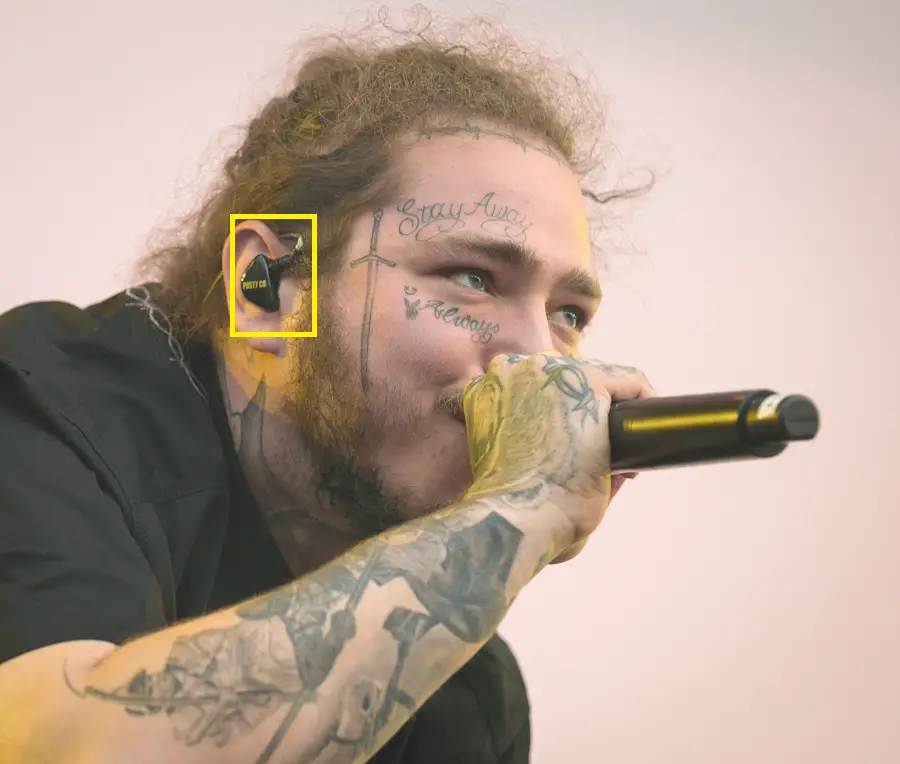If you go to a concert, or watch a live performance on YouTube or something, you may have noticed the singers or band members wearing something like this in their ears:

To people who aren’t experienced in the world of professional audio and live performance, this might seem peculiar. Why would a musician wear a pair of earbuds while they are performing? Well, these so-called performers’ earpieces actually have many functions that are important for a live performing musician to do their job properly, and this article will explain what those are, and why ear wear is actually critically important for any kind of music production.
Hearing Protection – Vitally Important For Live Music (Performers and Attendees)
One very important thing that people should always bring when going to a concert is a good quality pair of earplugs, because concerts are typically very loud and well above the threshold of what can cause hearing damage.
It obviously stands to reason then that the performers themselves need hearing protection too, especially because they are right in the middle of things and they presumably do shows quite regularly.
One important thing that a musician’s earpieces do is provide hearing protection via a well fitting seal that isolates outside noise and also possibly via active noise cancellation.
Could a musician just wear regular earplugs when they play? Sure, there’s nothing inherently wrong with that, and sometimes they will if that’s all they need, but earpieces also do additional very important things besides providing ample hearing protection.
Monitoring – What Do Singers Hear in Their Earpieces
In the world of professional audio “monitoring” basically means using equipment to hear yourself and how you sound – it’s important for musicians to be able to adequately hear themselves to sing and play their best, and in the context of a live performance monitoring allows the performers or crew make necessary adjustments if anything is off.
Speakers can be used for monitoring, and often are, but one issue they can have with live performances is that any mic can pick up their sound and create a feedback loop.
In-ear monitors’ sound is isolated to the person wearing them, as most people know, which overcomes the feedback problem. In-ear monitors also allow for individualized mixes to go to specific performers – what a drummer needs to hear might be different then what a lead singer wants to hear, for example, and you can’t manage that all so well with traditional monitoring loudspeakers.
And while lip syncing or fake playing has gotten a bad rap in the past, the reality is that sometimes musicians, even very good ones, have to do it, and in-ear monitors allow them to hear and stay in sync with a prerecorded back track.
Related: Why do singers have to lip sync sometimes?
Mobility – Being Able to Move Around Stage Safely
Managing equipment clutter, particularly cables on the floor, is essential for not only performer safety, but being able to efficiently set up and tear down a stage in a timely matter, and staying on schedule is hugely important for touring musicians.
Related: Why do musicians use rugs on stage?
Wireless in-ear monitors can eliminate the need for monitor wedge speakers on stage and the necessary cabling to connect them. They also allow for fun, high energy coreographed performances like this:
Why Do Some Performers Choose Headphones Over Earpieces?
There’s no reason a pair of traditional over-ear headphones can’t do everything a pair of in-ear monitors can, but the major downside of headphones is that they’re clunky and prone to sliding around if someone moves while performing, which most musicians will at least somewhat.
Headphones do have an upside, though, which is that they’re much easier to quickly take on and off then in-ear monitors are, and this is a worthwhile trade off in specific situations, like club DJs for example who want to be able to hear what’s going on and queue the next transition properly.
Related: Why do DJs wear headphones?
